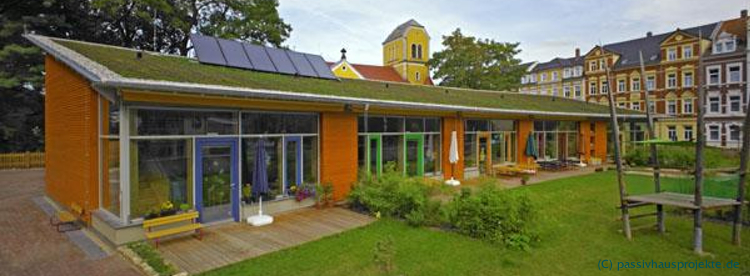There are so many great ideas flying around FabCab these days, it’s high time we let you in on some of the excitement. So without further ado, let’s talk about Passive House design…
This Is Passive House
One of the most exciting advances in sustainable design in Europe in the past few years is the Passive House concept. Passive House buildings require little to no energy for heating and cooling. Instead, they achieve an energy savings of up to 90% through efficient design featuring an airtight shell, super insulation, proper solar orientation, and a heat exchanging ventilation system for a healthy fresh air supply.
The first Passive House was constructed in Germany in 1990. Since then, the concept has exploded in popularity for residential and commercial buildings in Europe. In 2008, the European Parliament passed a resolution calling for all new buildings in the EU to be built to Passive House standards by 2011. Passive Houses are just starting to appear in the US, with a number of pilot projects here in the Pacific Northwest.
Requirements
So what exactly is Passive House? It is a simple standard for energy efficient construction. Unlike many sustainable design standards (such as LEED and Built Green), it is a not a checklist or theoretical analysis of building performance. Passive House standards have three simple requirements, all measured after the house is complete:
– heat energy demand must be less than 4.75 kBtu per square foot per year
– total primary energy demand (including plug loads, lighting, etc.) must be less than 38 kBtu per square foot per year
– air leakage must be less than 0.6 times the house volume per hour with a 50 pascal blower door test
High Performance Building Envelope
This standard introduces a few alternative building methods into standard residential construction. The most visually obvious design element is the super-insulated building envelope. Passive House walls can easily be 12” thick, or more! Often the insulation is added to walls and roofs in layers, minimizing the amount of thermal bridging and therefore the amount of heat lost through conductance to the outside. High-performance windows are often triple-pane wood or fiberglass. And the house is well sealed with a continuous air barrier, often located within the wall to protect it from puncture.
A Little Fresh Air
Although the house is air tight, the air inside is very fresh thanks to the continuous ventilation system. Instead of relying on cracks around windows and doors for “fresh air” (like in my old craftsman bungalow), the Passive House ventilation system filters the intake air, warms it up by running it past the exhaust air, and distributes it through the house.
Passive House and FabCab
Passive House design is exciting to us here at FabCab! With energy futures uncertain and the environment in mind, we think now is a great time to invest a little up front to be less reliant on traditional energy sources. Although Passive House standards can increase the cost of construction by 5-20% over Code minimum, these upgrades will pay for themselves in ten years or less. We hope to incorporate Passive House standards into a future line of FabCab designs.
Tell us what you think – would you invest more up-front for lower heating bills in the future?
Want to know more?
Here are a couple of excellent articles from the New York Times:
No Furnaces but Heat Aplenty in ‘Passive Houses’
Can We Build a Brighter Shade of Green?

